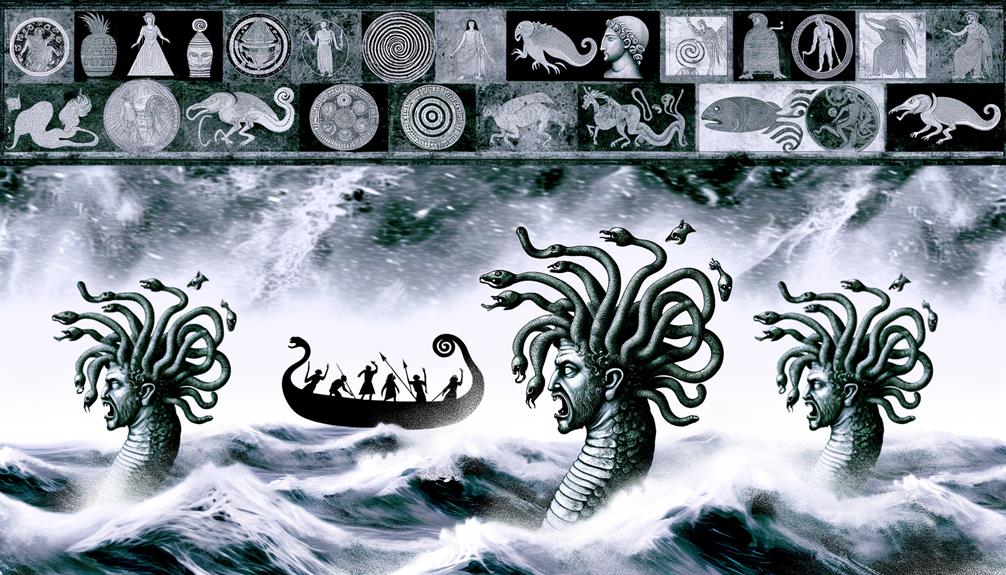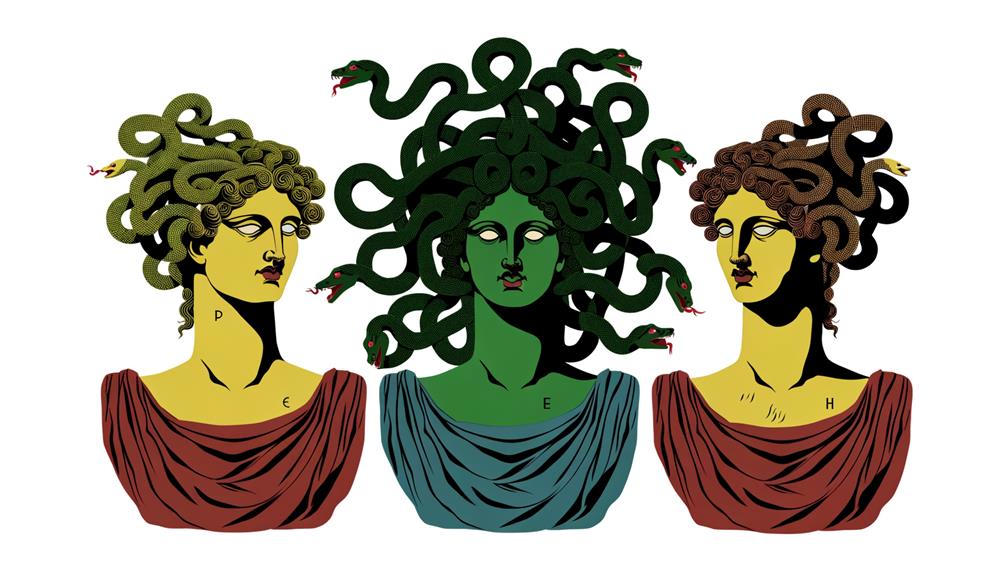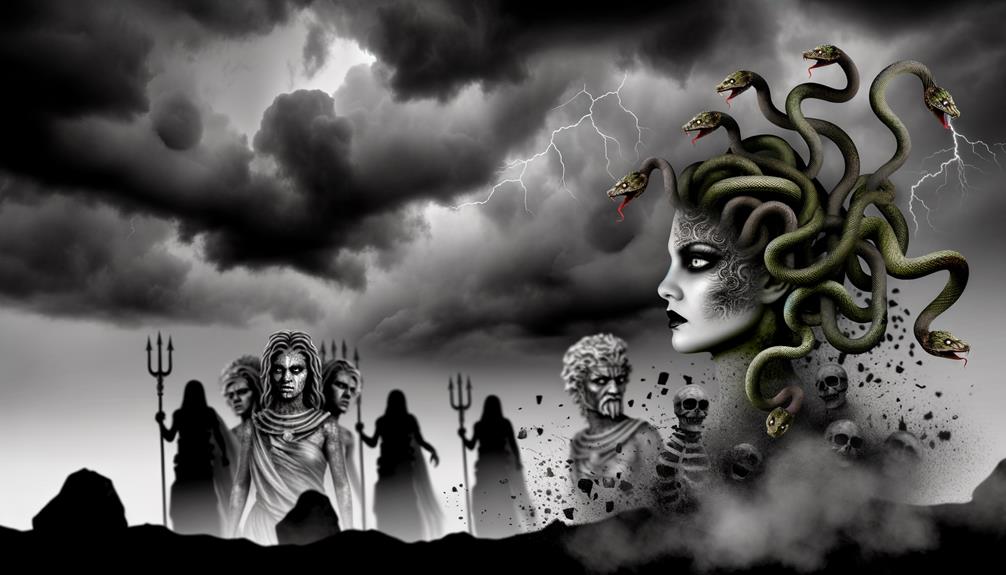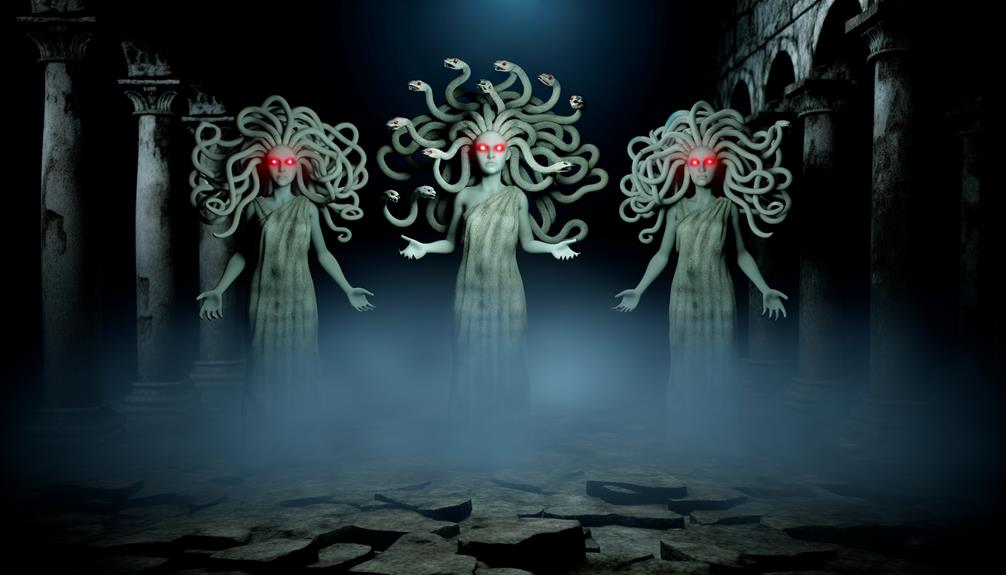Did you know that despite all the hype around Medusa, she's not as deadly as her sisters? You heard it right! In the ancient Greek tales, Medusa is just one of the three Gorgon sisters, with Stheno and Euryale being the other two. What's interesting is that Medusa, the only mortal among them, is the one who has found a place in today's pop culture. The Gorgons are typically portrayed as terrifying women with snakes for hair, and just one look at them could turn a man to stone. But what about Stheno and Euryale, the immortal duo? Why do they remain in the background while their younger sister is the star of the show? Let's dig into the story of these overlooked characters and understand why their tales have been largely ignored.
Gorgon Sisters: Stheno and Euryale

Let's get to know the Gorgon sisters, particularly the less famous pair, Stheno and Euryale. These two aren't mortals like their sister Medusa, but rather, they're immortal with a gaze that can turn you to stone. As daughters of Phorcys, they have a significant standing in Greek mythology. Even though Medusa is well-known, her sisters, Stheno and Euryale, play crucial roles in the tales of ancient Greece.
In the story of Perseus and Medusa, they're often portrayed as grieving over their sister's death, indicating that the three Gorgons had a strong bond amidst their frightful existence. Their representation in various artwork, from sculptures to paintings, highlights the fear and authority they commanded.
Stheno, the eldest, had a reputation for being the most violent of the Gorgon sisters. Euryale, in contrast, was notorious for her ear-splitting scream. These characteristics made them fearsome figures, perfectly embodying the terror that the ancient Greeks felt towards such hideous creatures.
To put it simply, Stheno and Euryale, Medusa's sisters, are as important to the Gorgons' story as Medusa herself. Their narrative provides a multi-layered perspective to the tale, giving us a more comprehensive view of this famous trio from Greek mythology.
Mythical Origins of the Gorgons

Let's dive into the captivating world of the Gorgons and their origins in ancient Greek culture. Our journey takes us back to approximately 750 BCE, when the Gorgons first appeared in Homer's Iliad and Odyssey. The Gorgons, made up of the sisters Medusa, Euryale, and Stheno, were fearsome creatures that have held a fascination for people for centuries, thanks to their fearsome appearances and mythical stories.
- Homer's epic poems are the earliest sources that mention the Gorgons, presenting them as terrifying creatures. This gives us a taste of the fear they instilled in the people of ancient Greece.
- The Gorgons' characterization in Greek mythology was expanded upon in Hesiod's 'Theogony'. In this work, Medusa's story takes a different turn from her sisters, Euryale and Stheno. She becomes entangled in the lives of the Olympians, emerging as a tragic character who is ultimately killed by Perseus. However, her death leads to the birth of the winged horse Pegasus, which shows a fascinating mix of destruction and creation.
- Depending on the context, Medusa's image can change. When depicted with Perseus, she appears more human; when she's alone, she's shown as a monster. This difference highlights how various periods and cultures have influenced the portrayal of the Gorgons.
From this, we can glean insights into the mythical origins of the Gorgons and how they played a significant role in Greek culture.
Iconography and Artistic Depictions

Let's dive into the fascinating world of Gorgons, shall we? These mythical creatures have been the subject of countless artworks throughout history, with their captivating depictions evolving over the ages. The head of a Gorgon, typically shown with hair of writhing snakes, a wide mouth, and tusks, was meant to scare the beholder in ancient art, particularly in depictions of the famous Gorgon, Medusa.
Isn't it intriguing how Medusa, the most notorious of the Gorgons, has changed over time? From being a horrifying creature, her image has been softened in modern times to highlight her beauty. This change in Medusa's representation reflects how our view of these mythical beings has evolved.
A favourite tale in the world of Greek and Roman mythology is that of Perseus and Medusa. Artworks often show Perseus on a mission to bring back Medusa's head, with the gods Athena and Hermes giving him a hand. And guess what? Athena decided to wear the severed head of the Gorgon on her shield, making Medusa a permanent fixture in classical art.
But it doesn't stop at mythology. Medusa continues to be a powerful symbol in different types of art and various periods. Even big-name artists like Leonardo da Vinci, Caravaggio, and Salvador Dalí took inspiration from her, highlighting the lasting impact these terrifying sisters have had on classical art.
Medusa's Transformation: A Deeper Look

Let's examine in depth the fascinating transformation of Medusa, a character who transitioned from a respected goddess to a terrifying monster. This dramatic shift was triggered by Athena's anger following Neptune's assault on her in Minerva's temple. Medusa's allure, which was so potent it drew Poseidon, was cruelly taken from her and she was morphed into a beast, a change ignited by Athena's rage.
- Medusa's metamorphosis was not only physical but also symbolic. In her outrage, Goddess Athena punished Medusa by turning her hair into a hive of poisonous snakes. Her face, which was previously a symbol of beauty, became so horrifying that it petrified anyone who looked at her.
- This shift also represented her downfall. Poseidon's infatuation with Medusa's beauty, and his resulting assault in Athena's temple, signaled the start of her descent.
- The end of Medusa's tale is just as heartbreaking. Decapitated by Perseus, her head became one of the Gorgon heads, used to instill fear and dominance.
The transformation of Medusa, from a revered figure to a creature of horror, is a narrative of divine retribution and blaming the victim, a story that continues to echo today.
Modern Interpretations of the Gorgons

Let's take a look at how the Gorgons, particularly Medusa, are seen through a contemporary lens. These days, they're viewed not as monstrous figures from mythology, but as powerful symbols of female strength and defiance. The scary snake-haired women of old are now viewed as beautiful and daring, their serpent locks not merely symbols of fear but of resistance.
The tale of Medusa, especially her transformation and tragic end, has been reimagined quite significantly. Her petrifying gaze, once seen as a sign of her beastly nature, is now regarded as a reflection of her anger against male dominance. The blood she shed at her death isn't seen as a sign of her downfall anymore, but as a testament to her lasting power and influence.
Present-day readings of the Gorgons also dig deeper into the subjects of victim blaming and the reassertion of female power. They invite us to rethink our perceptions of these characters, not as simple antagonists, but as victims of male violence. Their monstrous forms symbolize their struggle and rebellion. Through these reinterpretations, the Gorgons have transformed from being terrifying creatures to powerful symbols of feminine strength and resistance.
Frequently Asked Questions
How Did Medusa's Sisters Turn Into Gorgons?
Medusa's sisters, Stheno and Euryale, were a different story. They were born in the form of Gorgons, unlike Medusa who had to go through a transformation. This means that there was no process of 'becoming' Gorgons for them – they've always been that way from the start.
What Is the Difference Between Medusa and Her Gorgon Sisters?
Medusa, compared to her sisters Stheno and Euryale, is a stand-out character due to her exceptional portrayal in art and critical role in the story of Perseus. Unlike her siblings, her fame expands beyond the confines of Greek mythology, making her a more prominent figure.
What Happened to the Gorgon Sisters?
So, you're wondering about the fate of the Gorgon sisters? Well, unlike their sister Medusa, Stheno and Euryale weren't mere mortals. After the tragic fall of Medusa, her sisters continued to live on. You see, they held onto their chilling powers and their reputations remained as terrifying as ever in the lore of Greek mythology.
Can Gorgons Petrify Each Other?
Absolutely, gorgons are capable of transforming each other into stone. There isn't any folklore to suggest that they can fend off each other's stony stare. Therefore, an accidental look could potentially result in a tricky predicament for these mythical beings!

